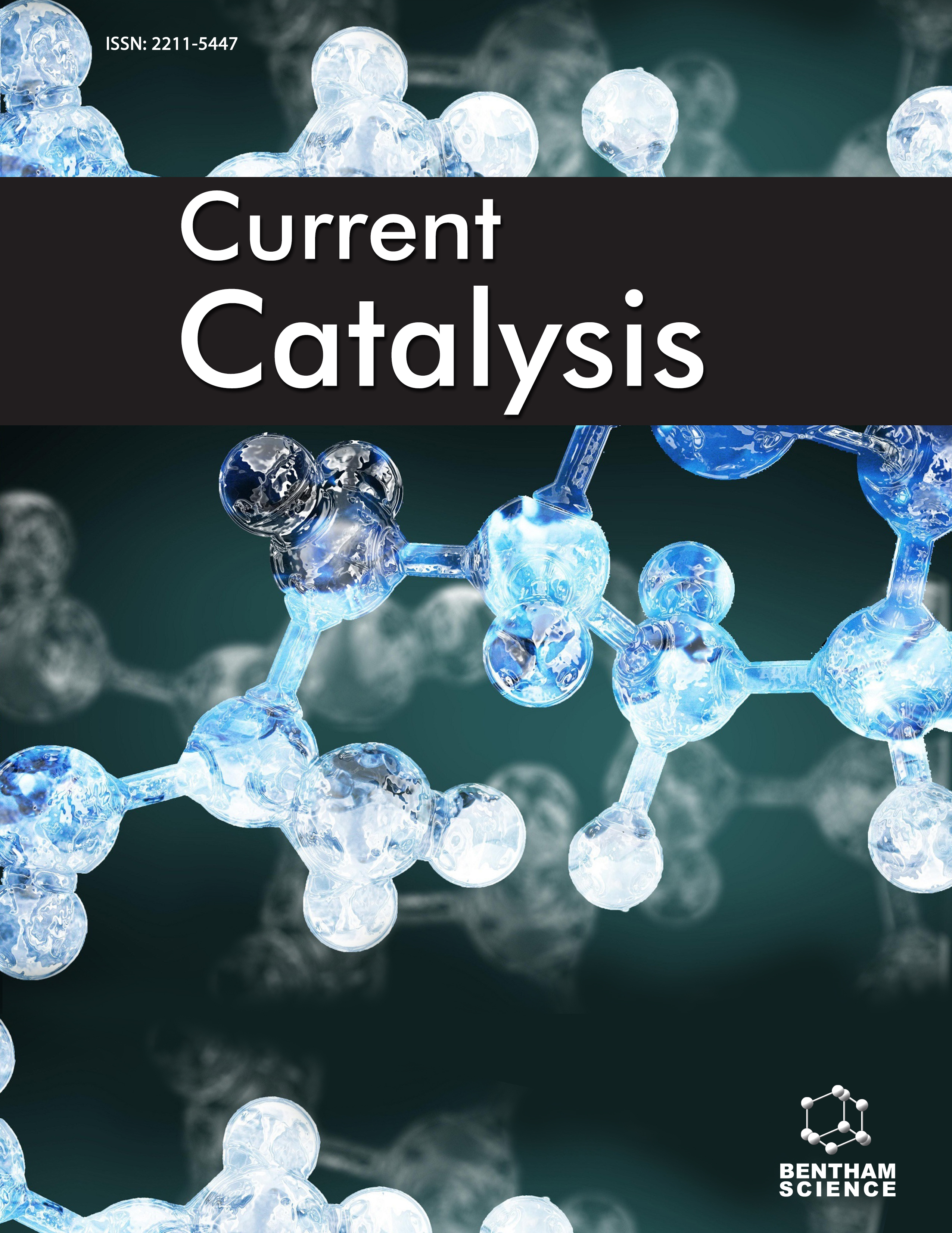- Home
- A-Z Publications
- Current Catalysis
- Previous Issues
- Volume 2, Issue 3, 2013
Current Catalysis - Volume 2, Issue 3, 2013
Volume 2, Issue 3, 2013
-
-
Cascade Synthesis of N-Heterocyclic Compounds through One-Pot MCR over CuII−Hydrotalcite Catalyst
More LessAuthors: Avvari N. Prasad and Benjaram M. ReddyThis article highlights the cascade synthesis of various N-heterocycles and C–N bonding organic transformations catalyzed by a simple and efficient heterogeneous CuII–hydrotalcite (CuII–HT) catalyst. The CuII–HT was found to be a dynamic catalyst and exhibited promising catalytic activity towards one-pot MCRs, namely, synthesis of 1,4- disubstituted 1,2,3-triazoles, synthesis of 2H-indazoles, and C–N bond forming reactions Read More
-
-
-
Solid Acid-Base Bifunctional Catalysts in Organic Transformations
More LessAuthors: Hu Li, Hongguo Wu, Qiuyun Zhang, Jian Liu, Xiaofang Liu, Yancai Liu and Song YangThe tendency in recent decades is to develop environmentally friendly heterogeneous catalytic systems for organic transformations. In particular, chemical reactions cooperatively promoted by solid acid-base bifunctional catalysts with good dispersion of active sites and high catalytic performances have aroused much attention. In this review, recent advances in preparation and application of solid acid-base bifunction Read More
-
-
-
Preparation and Characterization of Ag Doped Mn2O3 Nanomaterial for CO Oxidation
More LessAuthors: R. K. Kunkalekar and A. V. SalkerNano-sized silver doped Mn2O3 was synthesized by starch assisted co-precipitation technique. The prepared samples were tested for CO oxidation reaction. Ag doped Mn2O3 sample was found to show higher activity then pristine Mn2O3. XRD patterns authenticate the formation of Mn2O3 phase. Electron microscopy images show that the particles are in nano-sized, agglomerated and 40 - 70 nm in range. Thermal analysis Read More
-
-
-
Synthesis of an Immobilized Bronsted Acidic Ionic Liquid Catalyst and Hydrolysis of Cellulose in Water Under Mild Conditions
More LessAuthors: Ananda S. Amarasekara and Bernard WireduA Brönsted acidic ionic liquid catalyst with a sulfonic acid group tethered to imidazolium cation, and immobilized on polystyrene was prepared by a two step method in 83% overall yield. This immobilized Bronsted acidic ionic liquid catalyst was shown to be a significantly better catalyst than H+ form of Dowex-50X8 of similar SO3H group loading for hydrolysis of untreated Sigmacell cellulose (DP ~ 450) in water under hydrother Read More
-
-
-
Effect of Nanogel Structure and Reaction Parameters on Activity of Immobilized Glucose Oxidase
More LessAuthors: Rohini Dharela and Ghanshyam S ChauhanImmobilization of enzymes on suitable supports is an interesting area of investigation to increase their application spectrum in the synthetic, therapeutic and biosensor fields. In the present study, a new series of nanogels was used for the immobilization of glucose oxidase (GOx). Nanogels based on poly(acrylic acid) cross-linked with N,N-methylene bisacrylamide were synthesized using a surfactant free emulsification meth Read More
-
-
-
MOO2Cl2·2DMSO: Recyclable Catalyst for Selective Oxidation of Alcohols under Solvent Free Conditions
More LessAuthors: Vaibhav R. Acham, Mohan K. Dongare and Shubhangi B. UmbarkarThe catalytic activity of the dichlorodioxomolybdenum (MoO2Cl2·2DMSO) complex was investigated for oxidation of aromatic alcohols to corresponding aldehydes using dimethyl sulfoxide (DMSO) as an oxidant under solvent free conditions. The catalyst showed very high conversion and selectivity for aldehyde with high turnover number up to 1000 and high turnover frequency. For substituted benzyl alcohols there wa Read More
-
-
-
A Facile and Convenient Approach for the One-Pot Synthesis of Naphtho- 1,3-oxazine Derivatives
More LessAuthors: Santosh V. Goswami, Sunil S. Wagh, Shrikant S. Pendalwar and Sudhakar R. BhusareA protocol describes the synthesis of naphtha-1,3-oxaizine derivatives via one-pot multi-component reaction of α-naphthol, formaldehyde and various substituted anilines catalyzed by L-proline as an efficient catalyst. A method offers delightful advantages such as mild reaction conditions, environmentally benign, easy experimental workup and good to excellent yields.
-
Most Read This Month
Article
content/journals/ccat
Journal
10
5
false
en


